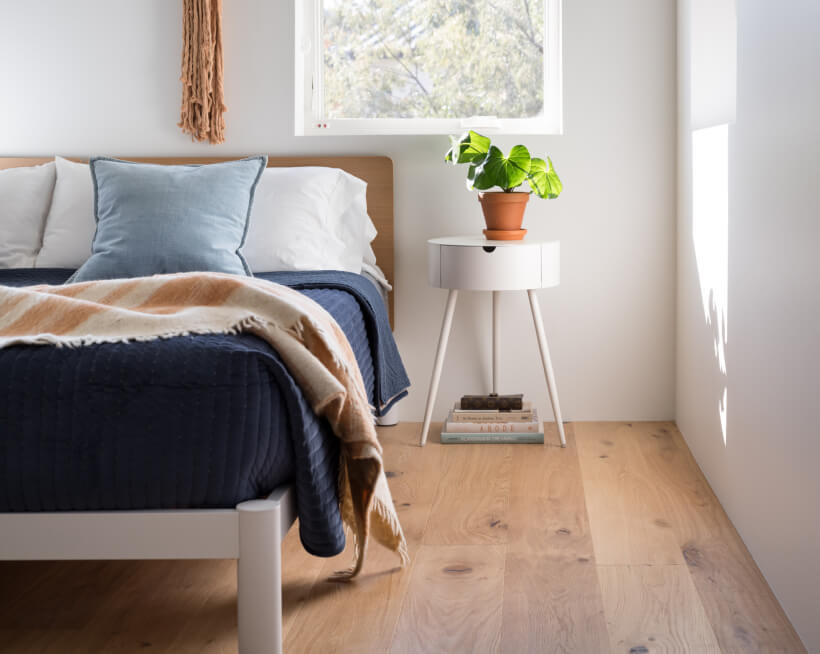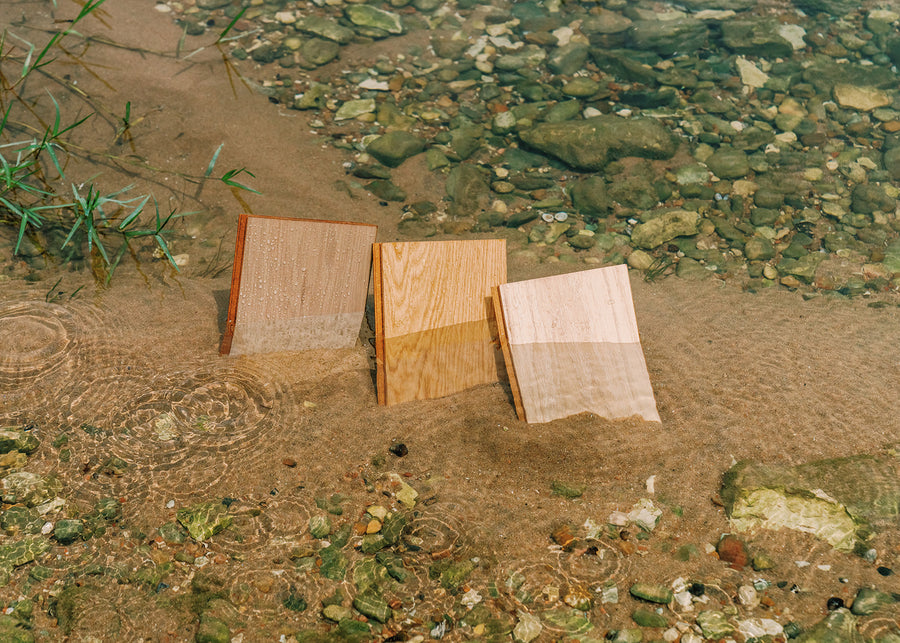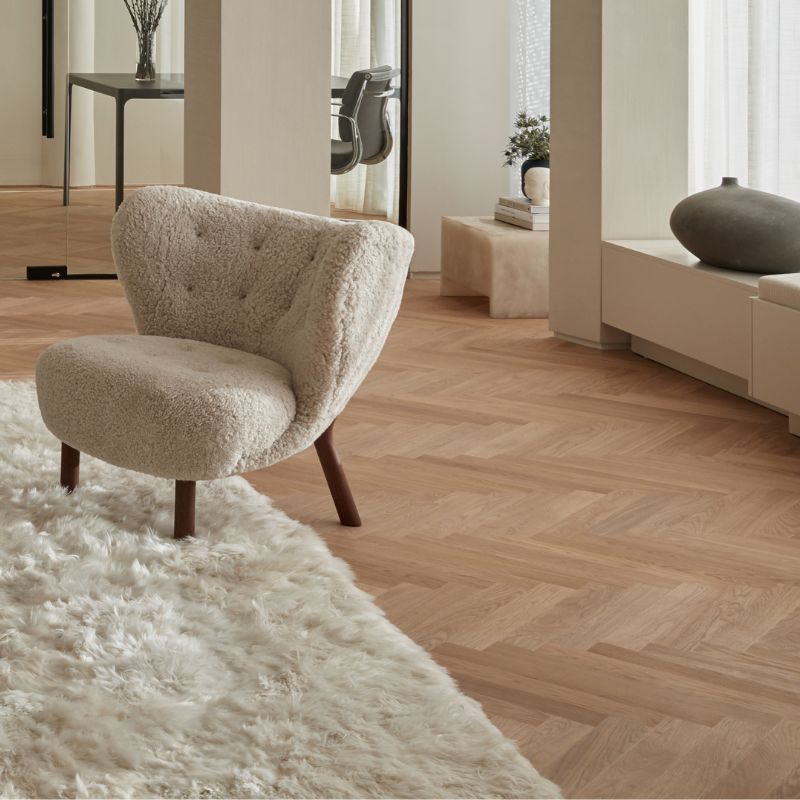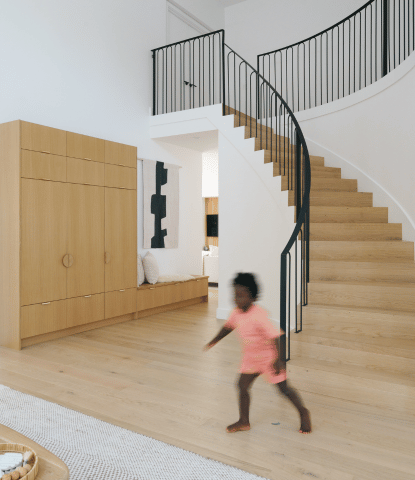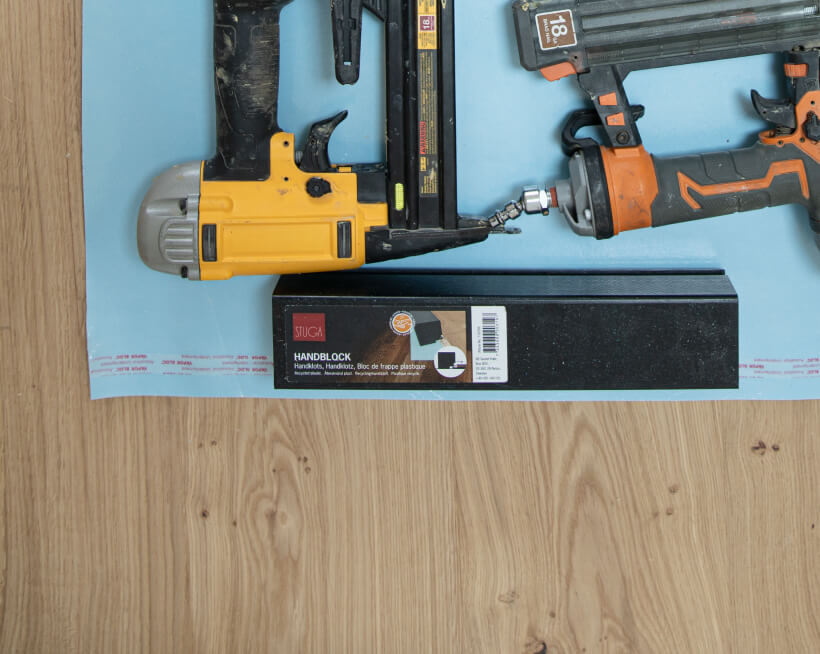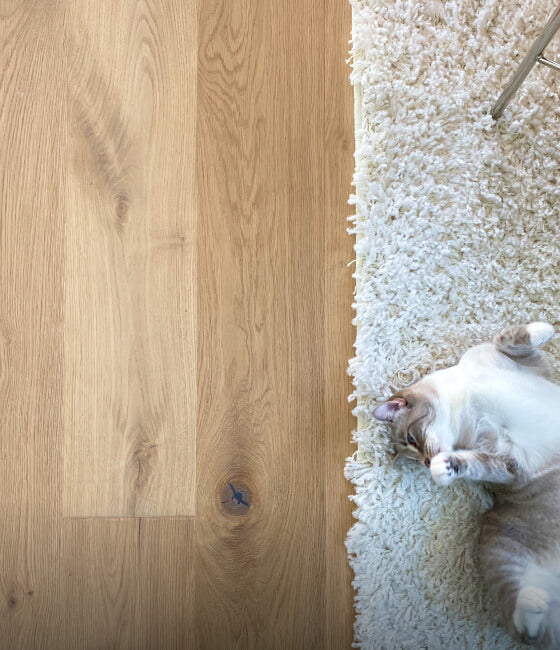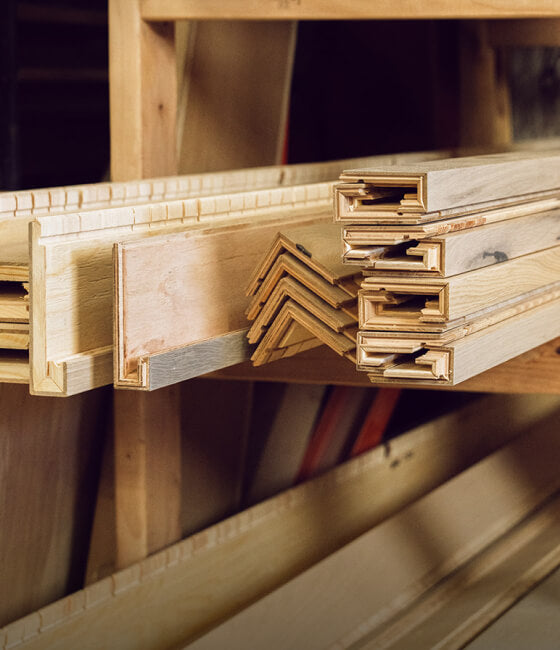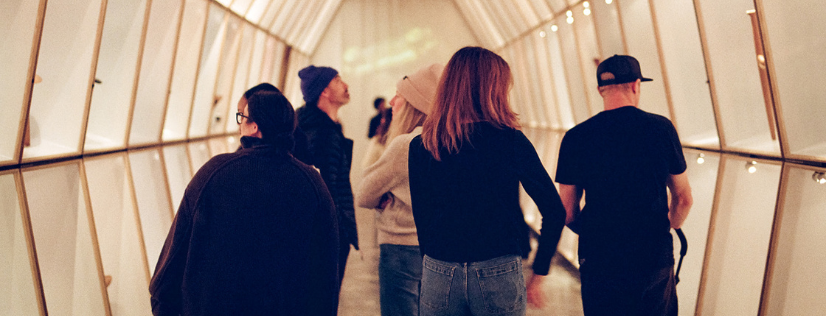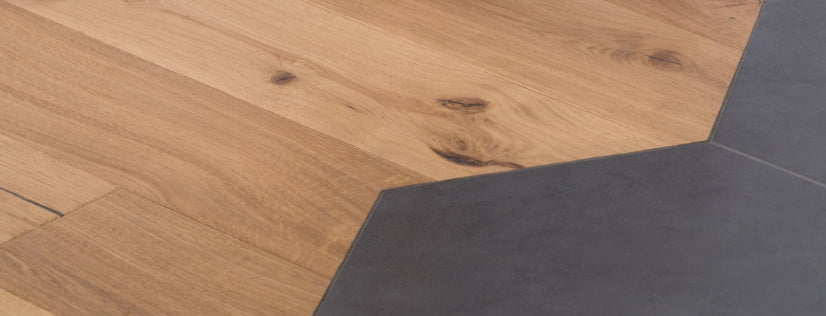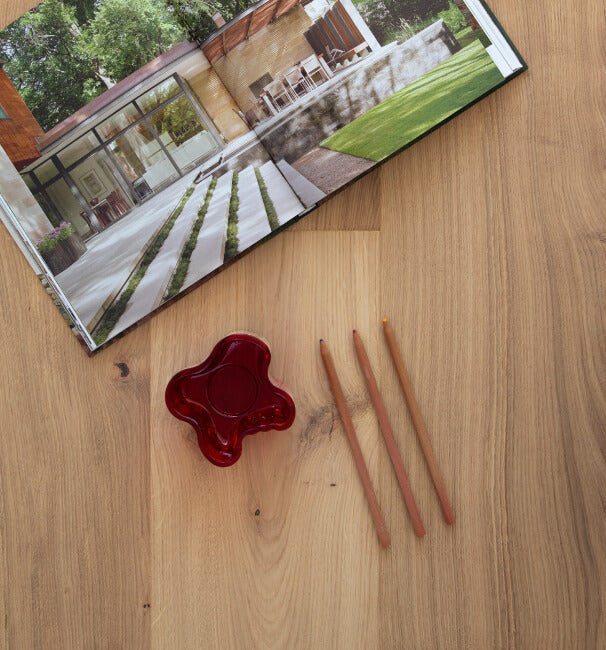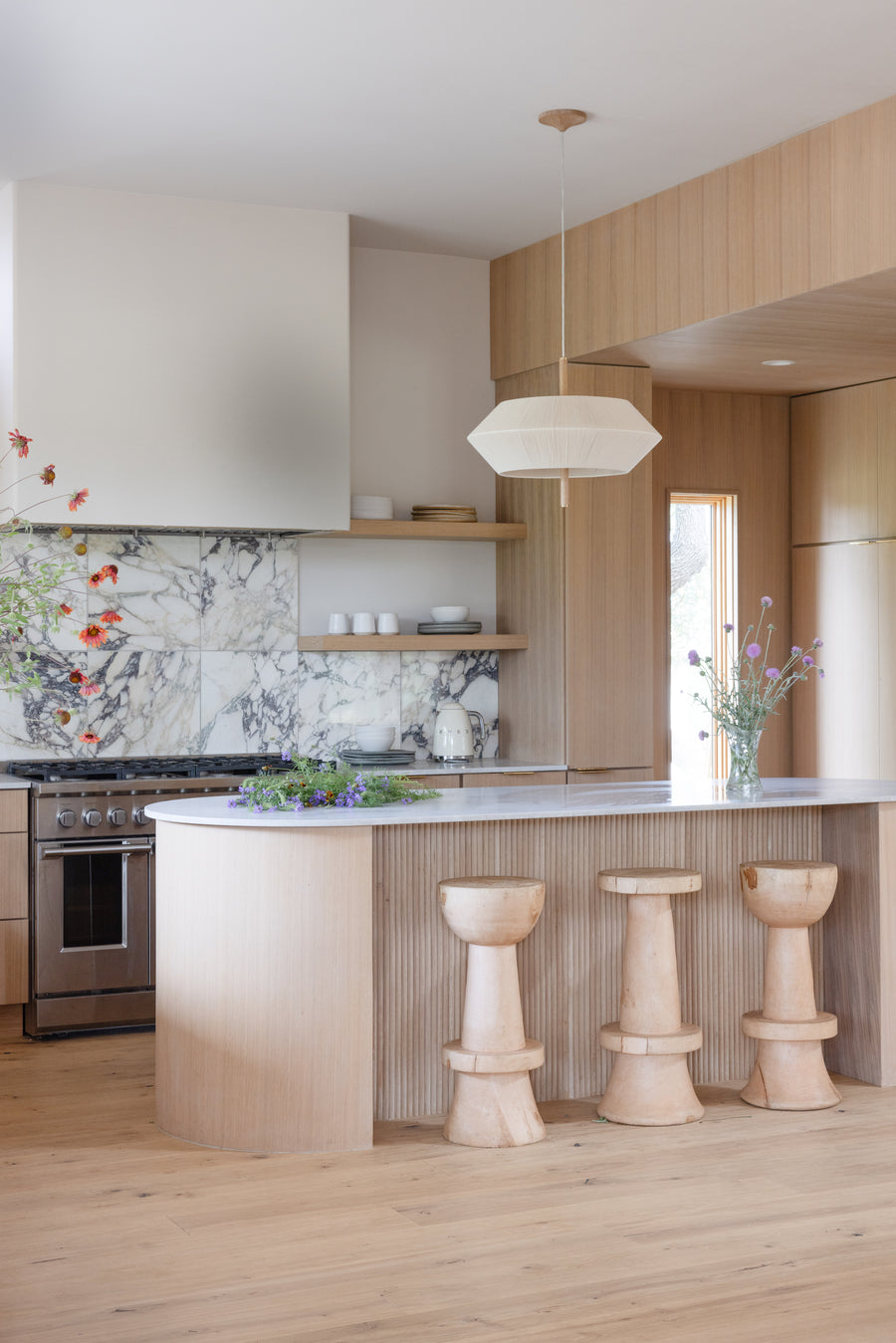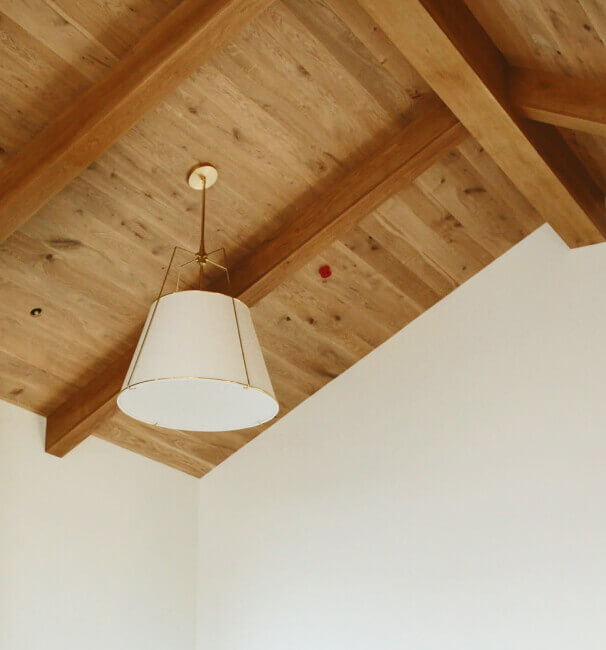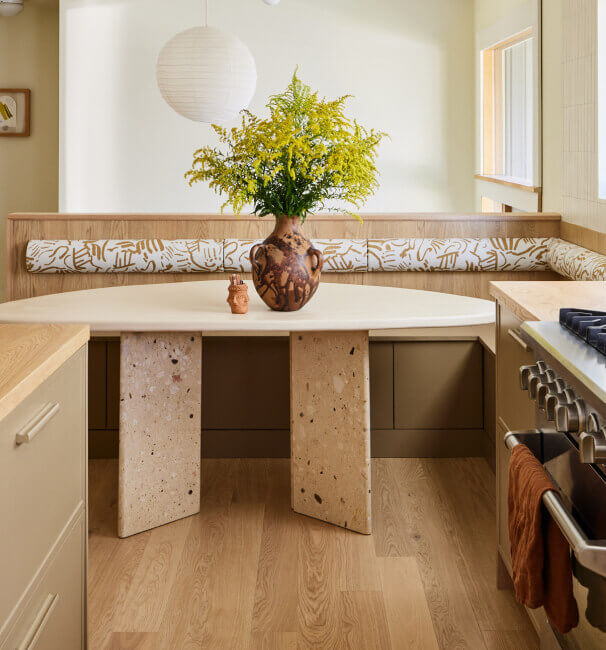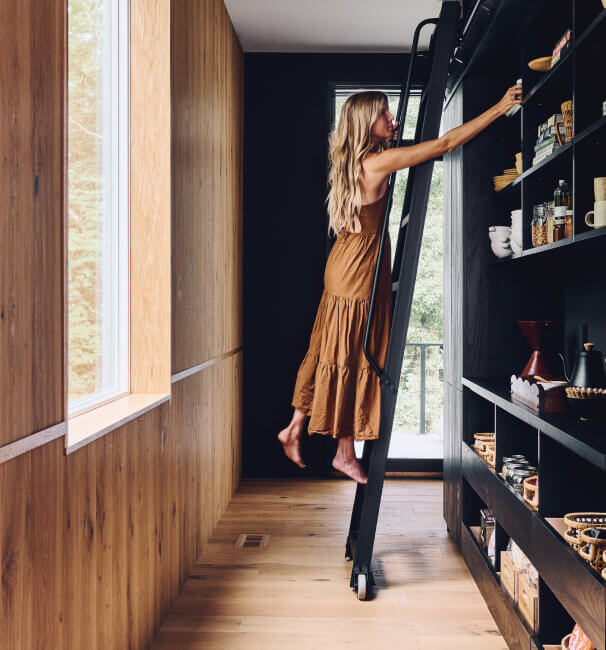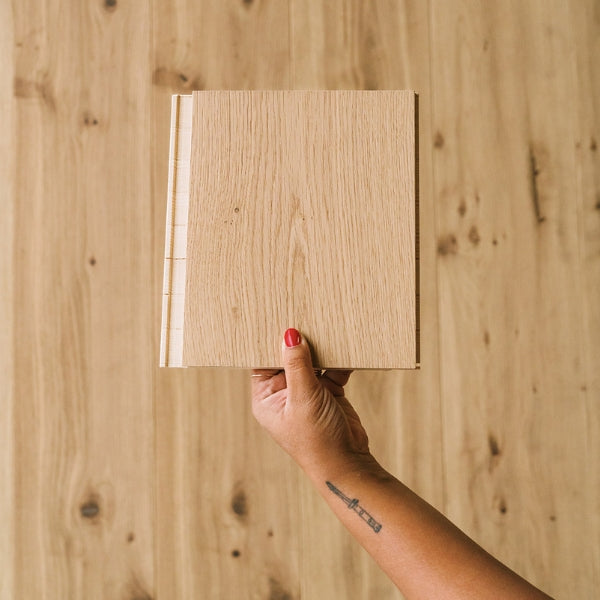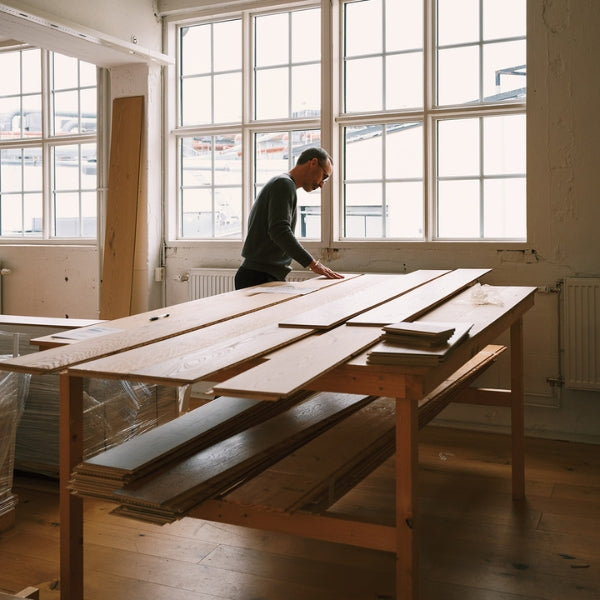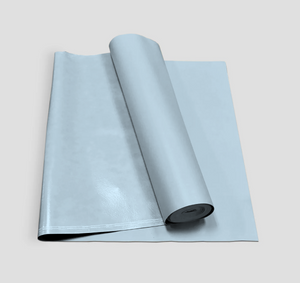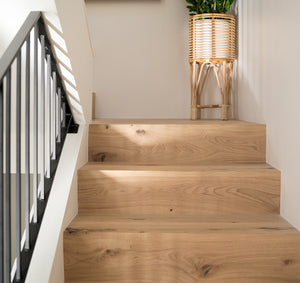Frequently Asked Questions
Getting Started
We provide thoughtfully-designed hardwood floors and unique stair solutions directly to you, with ease. We’ve partnered with Scandinavia’s most forward-thinking hardwood flooring manufacturers to bring you a dreamy collection of wood floors that you can browse, sample, and buy online.
At Stuga, we’re not salespeople - we’re flooring experts who live with what we sell. We’ve been in your shoes, searching for the right fit. That’s why we curate only what we trust and test daily in our own homes. When we say we know our floors, we mean it - down to how they feel on a lazy Sunday morning.
Our floors are the most certified in the world. While many engineered floors are constructed with low-quality, toxic glues and finishes, ours meet European standards that are among the most stringent worldwide. Breathe easy knowing that your Stuga floor will be one of the safest materials in your home. In fact, there is more formaldehyde in an apple than in 2,000 square feet of Stuga flooring.
We understand that wood floors are an investment. While you can sacrifice in the short term by going with others, Stuga floors are steps ahead in beauty and quality. We only use premium raw materials, milling full-length boards from sustainably harvested logs.
Our versatile floors are designed for every level of your home (even basements) and can be installed on walls and ceilings as well.
Learn more about what quality means at Stuga here.
- First, browse our floors and use our filters and compare tool to narrow down your options.
- While browsing, you can easily add free samples to your cart with one click (just tap the + on mobile, or + free sample on your desktop). You can also add samples to your cart from individual product pages.
- Get inspired by browsing through the beautiful homes from coast to coast featured on the site.
- Once you narrow down your choices, you can order large 2x3’ samples to see more of the floor’s character.
Our website is our showroom! We ship directly to you, anywhere in the US, from our Austin, TX shop. Check out our Families page to compare floor specs side-by-side and get recommendations for similar floors as you browse. Our small samples are free, and our large samples – which, at 2x3’, are larger than what you’d find in a typical showroom – are just $25. Prefer a more personal way of shopping? Chat with our team at 1-844-MY-STUGA or email us at hej@stuga.com.
Still want to see our installed floors in person? Find them in the wild at any of these locations.
421 S. Myrtle Ave
Monrovia, CA 91016
2215 Larkspur Landing Cir., Unit 25A
Larkspur, CA 94939
Hygge Life (Fika, Sisu, Pepper)
41149 US Hwy 6
Avon, CO 81620
Yes! Learn more and apply here.
Orders
All of our floors carry a lifetime warranty. You can read our full warranty here.
For our most up-to-date Return Policy, click here.
Absolutely! You can preorder and check out as usual through our site. Once it comes back in stock, it’ll arrive to you in 9-12 business days.
Yes! We know that you have a lot to manage when renovating or building a home. To make things a little easier (and allow you to lock in inventory and pricing), we offer free held orders.
At checkout, you will see an option that says “Delay My Shipment”. Simply pick your ideal ship date using this feature. We’ll keep your order in our warehouse until you are ready to receive it. Note that all held orders are final sale. Learn more about held orders here.
We accept all major credit cards as well as Shop Pay, Google Pay, PayPal, and Venmo. Financing is available via Shop Pay. We also accept payment by ACH (get in touch with our team at hej@stuga.com for details).
We offer a 1% discount on all flooring orders paid by ACH or wire transfer. This seemingly small discount can add up to serious savings. Bonus: every percentage point taken off your order overall will lower your total sales taxes, too.
Sometimes this can happen, but don’t worry! Often, banks can offer temporary credit limit increases for large purchases. Contact your bank to find out if this option is available to you. If you’re still having trouble, get in touch with us at hej@stuga.com or 1-844-MY-STUGA to split your order.
Yes! Get in touch with us at hej@stuga.com or 1-844-MY-STUGA to split your order into multiple payments.
Yes, full payment is required at the time you place your order.
Shipping & Delivery
Samples, accessories, and stair nosings ship for free.* All flooring ships for a flat rate of $249* which covers a curbside self-unload delivery. In some areas, white glove services may be available at checkout for an additional fee.
*Additional shipping fees apply for international shipments and shipments to Alaska, Hawaii, and Puerto Rico. Please contact us for a custom quote when shipping to these states or any countries outside of the United States.
Samples arrive within 3-5 days. Flooring and underlayment orders arrive within 9-12 business days. Stair nosings and moldings are made-to-order. Nosings take 4-5 weeks, and moldings take 2-3 weeks to ship.
On flooring orders, the freight carrier will call you a few days prior to set up a delivery day and time. Tracking numbers on all flooring orders reflect the date at which your flooring arrives at the local freight carriers terminal, not your home. Expect another 1-3 business days for it to be delivered to your home.
When/if a floor is sold out in the US, average lead times from Europe are 7-9 weeks.
Your floors will ship upside-down in our manufacturer’s packaging, wrapped in plastic. Leave them closed until they’re ready to install. Don’t worry if they look different than you expected — you’ll only see the back of your floors through the packaging. When you flip a plank over, you’ll see the top layer of oak or walnut.
Your floors will be palletized and shipped via a freight carrier. The freight company will call you to schedule a weekday delivery appointment, typically a 4-hour window. Because wood floors are long and heavy, sometimes they cannot be moved with a pallet jack. In this case, you may need to unload your pallet(s) by hand. Each flooring carton weighs 35-50 lbs, so we highly encourage you to have a few people available to unload on the day of delivery. TaskRabbit is a great resource for hiring local help if you need extra assistance. If the driver is able to move your pallet(s) with a pallet jack, it will be delivered curbside.
When your floors arrive, leave them in their cartons until you are ready to install. An air-controlled environment is the best storage location. If you need to use a garage or other building without climate control, you may need a humidifier or dehumidifier to keep the relative humidity within an acceptable range (30-65%). Place your cartons on top of a pallet or another barrier to avoid direct contact with the concrete slab.
Yes, we ship to Alaska, Hawaii, and Puerto Rico. However, additional shipping fees apply. Please contact us for a custom quote when shipping to these states.
We are not directly able to ship internationally, but we are happy to ship to a freight forwarder anywhere within the contiguous US.
Our goal is to ensure that your floors arrive in perfect condition, but sometimes the ride to your home can be bumpier than usual. That’s why we ask that you inspect freight at time of delivery and take a photo of the material on the pallet if any visible damage is present. PLEASE NOTE THE DAMAGES on the shipping paperwork when signing for the shipment. Please contact us within 24 hours to report the damage, as well.
If you do find obvious damage, do not refuse delivery. Doing so may result in shipping fees to return the material to Stuga, as well as delays in delivering replacement materials. Stuga is not responsible for any additional costs associated with, but not limited to, project delays, contractor fees, refused/returned deliveries, denied claims, or non-reporting within policy.
In many cases, the floors are still usable despite damage. If no more than 50% of a locking system is damaged, the floor is still completely fine to install. If you find more than 50% damage to a locking system, or any damage to the top, oak layer of the floors, we will replace the damaged boards free of charge or refund the damaged boards as soon as possible.
Please contact Stuga customer service at hej@stuga.com to report damage within 48 hours of delivery. We ask that you include photos of any damaged boxes in your email.
Installation
We try not to pick favorites, and there is no "best" way. It all depends on the project. Learn the pros and cons of each method here.
Yes, for full warranty coverage specifically against the possibility of moisture damaging your floor from below, our approved underlayment is required (with the exception of glue-down installations). Our Nature All-In-One Underlayment is approved for both floating or staple-down installations. For glue-down installations, using a glue with a built-in moisture barrier is an acceptable alternative to underlayment. Our favorites are Bona R851 and Bostik Greenforce.
Overage is an extra percentage of material that helps you cover waste from cuts made during install. At Stuga, we recommend 8% overage instead of the industry standard, 10%. That’s because we know that every board you receive will be in usable condition. And if you receive unusable, damaged boards from particularly rocky shipping, we’ll send you replacements.
You can easily find your total flooring needs using our calculator, which is found on each product page. It’s easy to add overage - the option to include 8% overage is automatically selected.
Yes, in addition to being floated, most of our floors can be stapled and/or glued down. The exceptions are the Rebels, Zig Zag, Popup, and All Aboard, which can only be floated or glued. Sisu, Old Town, and Archipelago can only be glued down.
No. Our material comes packaged in plastic at a specific moisture content so you can just open up the cartons and begin installing right away. If you wish to wait a few days or weeks to install after the flooring has arrived, simply leave the flooring in its package.
Yes! You can DIY, hire a local flooring contractor, or even have your GC handle installation without jeopardizing your warranty. We have a select group of preferred installers around the US that we know and trust. You can find a list with their contact info here. If we don't have a preferred installer in your area, don't worry. You can find talented installers via the NWFA's directory.
Absolutely! Radiant heat is very common in Scandinavia and our floors have been lived on over radiant heat systems for years. Whether it's a radiant heat mat or tubes in gypcrete, our floors work wonderfully. Your installation method (float or glue down) will depend on the subfloor. If you choose to glue over radiant heat, be sure to get written approval from the glue manufacturer that it's suitable for glue-down over radiant, since glue is typically the first thing that fails in adverse radiant heat conditions.
All of our floors work beautifully in half baths. Our waterproof Rebels can be installed in any room, including full baths. If you choose to float the Rebels in a full bath, be sure to use silicone caulking where the floors meet the tub or shower.
While our other floors are not under warranty in full baths, some customers choose to install them there regardless. If your heart is set on using a floor like Greta in your full bath, just keep in mind that the more it is exposed to moisture, the more quickly it will age. Avoid allowing heavy amounts of water to sit on the floor for long periods, as this can cause the planks to swell.
Absolutely! All of our acrylic-finished floors are super easy to keep clean. The Rebels are waterproof, making them even more resilient to kitchen spills. Oiled floors are more prone to staining, but can be re-oiled more often than other areas in your home to minimize stains.
Yes! Unlike other wood floors, ours perform wonderfully in a basement. Floating the floor over one of our underlayments ensures the floor is protected from moisture below and will perform incredibly for years to come. Our locking system makes floating installations incredibly easy.
You don't need to worry about dye lots or batches when it comes to our floors. The floors will naturally vary in color and character from box to box, as every tree is different. Some floors have more variation than others. If you install a floor in phases months/years apart, you may find that the older floor has deepened in color. This is a natural process called patina. Think of it as a tan line - the new floor will catch up to the older floor over time, evening out the color.
Not at this time. Many of our customers choose solid wood vents and stain them to match their flooring, or go with a cleaner look using a brand like Fittes.
You can take a sample of flooring to a local hardware store to pick up the best match. If you don’t need much filler, you can also sand off a bit of the top layer on a scrap piece of flooring, and mix the sawdust with a few drops of wood glue. This will give you a perfect match to your floor.
Care & Maintenance
Live like the Swedes and don't wear your shoes in the house! Seriously, this keeps your floors looking like new and also makes cleaning much easier. Vacuum regularly and occasionally use a damp, well-wrung-out cloth/mop, like the one in your Welcome Box. Only dampen the floor slightly. The film of water left by the mop pad must dry within a minute. For best results, use the spray cleaner from your Welcome Box or Bona spray cleaner every few months or so.
No, like all wood floors, steam mops should never be used on our products. Steam mops can break down your floor’s finish over time and cause the wood to swell.
Stuga customers have installed our floors anywhere from humid Hawaii to arid environments at elevations of 10,000 feet and above. Like most wood flooring companies, we recommend a range of 30%-65% indoor relative humidity to ensure our floors will perform wonderfully.
Wood either takes on or gives off moisture. In dry areas, it's important to maintain consistent relative humidity indoors as much as possible to keep the floors from drying out and shrinking or cracking. In humid areas, maintaining consistent relative humidity will help avoid swelling and expansion.
If your indoor relative humidity is lower than 30%, a whole-home humidifier is a great solution that creates a much healthier environment for you and your family as well. Likewise, if your relative humidity exceeds 65%, consider a whole-home dehumidifier.
Our Rebels are the most durable wood floors in the world, so we highly recommend them for households with heavy wear and tear. They are waterproof, difficult to scratch, and 3 to 5 times stronger than traditional hardwoods.
Any of our floors will perform wonderfully in normal family conditions. However, they will scratch and dent just like any wood floor. To minimize scratches, keep the ball throwing outside (especially for larger breeds).
Have a heavy shedder? All of our floors have matte finishes, which are much more forgiving than glossy finishes that show every strand of hair and speck of dirt. Our ultra-matte finishes are a great pick for homes with especially furry pets.
Yes, nearly all of our floors can be sanded twice, with the exception of the Rebels and Zig Zag. The Rebels will never need sanding, since they are highly durable. Keep in mind that sanding is something that is rarely done unless you wish to change the color of your floor. Our floors can be recoated or re-oiled if you're looking to remove scratches.
Our customers like our oiled floors because the detailed texture of the wood can be experienced in a closer way than traditional top-coat finishes. You can really "feel" the wood. Furthermore, they can be renovated if the floor is looking dirty or needs refreshing.
These floors do require an initial application of oil immediately after installation and once a year in high traffic areas like a kitchen or entry. Once applied, the oil typically takes about 12 hours to dry and a total of 24 hrs to fully cure. You can walk on the floor once the oil has dried, but do not place any furniture or rugs down for at least 24 hours. Applying the oil annually ensures the floor is protected from wear and tear since weekly or monthly cleaning can break the oil down.
Oiled floors can stain here or there, but we think these signs of life make a floor that much more beautiful. To address stains, we recommend using a stain remover formulated specifically for oiled floors, such as this one by Woca.
